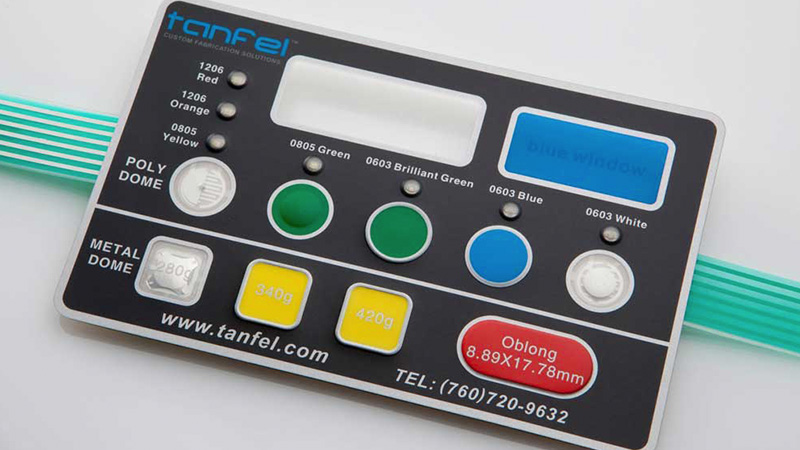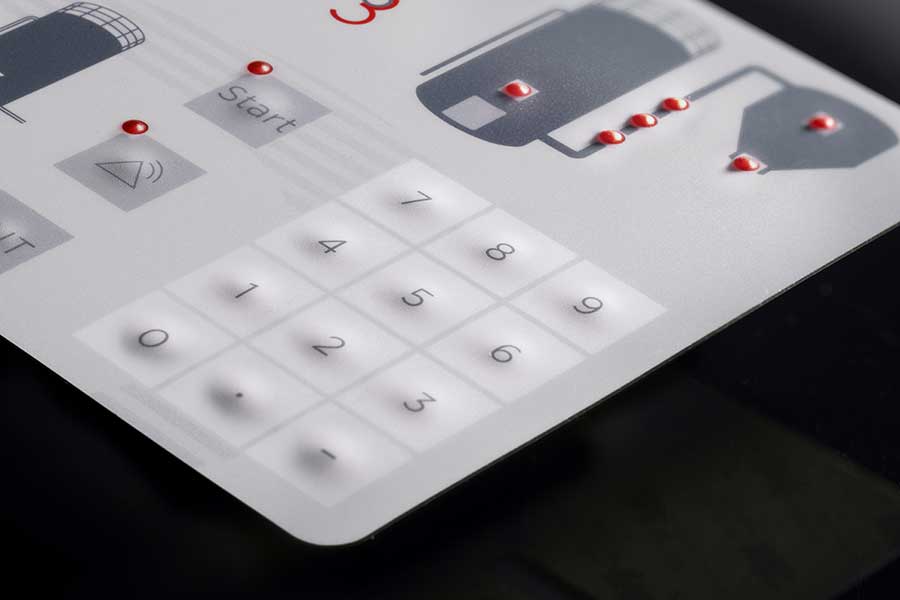Why Membrane Switches Are a Trustworthy Choice for Interface Solutions
Why Membrane Switches Are a Trustworthy Choice for Interface Solutions
Blog Article
Membrane Layer Switches Explained: A Comprehensive Overview to Their Advantages
Membrane switches over stand for a innovative and versatile solution for developing customer interfaces throughout a selection of industries. As industries increasingly look for reliable and trusted control interfaces, understanding the particular benefits and applications of membrane changes becomes necessary.
What Are Membrane Layer Buttons?

When stress is related to the membrane layer switch, the layers make call, finishing an electric circuit. This easy device enables a large range of applications, from consumer electronic devices to commercial equipment. Membrane layer buttons are commonly designed to be water resistant and immune to dust and impurities, making them ideal for environments where longevity is crucial.
Additionally, the versatility of the materials utilized in membrane changes facilitates ingenious styles that can adapt to different forms and measurements. This adaptability adds to their appeal in varied areas, consisting of medical tools, automotive controls, and home devices. On the whole, membrane switches over stand for an important aspect in contemporary customer interface technology, linking the void in between individuals and digital systems.
Key Benefits of Membrane Layer Switches
Among the myriad of interface choices available, membrane switches attract attention for their special mix of advantages. One of the key advantages is their light-weight and small style, which allows for assimilation into a broad variety of gadgets without adding substantial mass. This is particularly useful in applications where area is limited.
In addition, membrane layer switches over deal longevity and resistance to ecological factors. They are generally created with materials that can withstand wetness, dust, and numerous chemicals, making them suitable for extreme conditions. This resilience adds to a longer life-span compared to standard mechanical switches.
One more significant benefit is the flexibility in modification. Membrane buttons can be printed with different graphics, colors, and structures, enabling tailored layouts that meet details branding or functional demands. This versatility encompasses the variety of layers and circuit options, giving designers with several configurations.
Furthermore, the tactile comments provided by some membrane layer changes enhances customer experience, making them much more intuitive to run. Lastly, the simplicity of cleansing and upkeep further solidifies membrane layer buttons as a practical option in both consumer and commercial applications. Membrane Switches. On the whole, these key advantages make them a favored option for several developers and suppliers
Applications in Various Industries
How do membrane switches find their area across diverse industries? Their flexibility and performance make them essential elements in markets varying from health care to customer electronics. In medical devices, membrane switches are made use of for their convenience of cleansing and resistance to contamination, making sure health in atmospheres where sterility is essential.
In the customer electronic devices market, these buttons provide streamlined, straightforward user interfaces that improve item looks while preserving longevity versus deterioration. Automotive applications benefit from membrane layer switches over too, where they are utilized in dashboards and control board, using reliable efficiency in difficult problems.
Additionally, commercial machinery utilizes membrane switches for control board as a result of their robustness, ability to withstand harsh settings, and personalized designs that deal with particular operational demands. The food market leverages membrane layer switches for their convenience of usage and resistance to spills, guaranteeing operational effectiveness in fast-paced setups.
Ultimately, the flexibility of membrane switches across these varied applications highlights their important duty in contemporary innovation, improving customer interaction while fulfilling industry-specific requirements. Their proceeded evolution assures further assimilation right into emerging areas and innovative items.
Design and Personalization Options
The layout and customization choices readily available for membrane switches are critical for tailoring user interfaces to fulfill specific individual requirements and visual preferences. These switches can be made in various shapes, sizes, and designs, allowing for seamless combination right into varied applications. The adaptability in design implies that suppliers can create distinct interfaces that improve use and maintain brand identity.
Customized shades, graphics, and textures can be related to the surface of the membrane switch, supplying a chance for branding and individual involvement. In addition, backlighting alternatives, such as LED lighting, can be included to boost exposure in low-light problems, go to my blog hence boosting performance.
Practical elements can also be customized, including responsive responses and actuation pressure, which can be changed to fit different individual interactions. The selection of materials, such as polyester or polycarbonate, permits for variants in durability and environmental resistance, dealing with the certain demands of various sectors.
Inevitably, the considerable style and modification capacities of membrane layer buttons allow companies to develop aesthetically enticing and easy to use user interfaces, making certain that their items satisfy both functional and visual needs successfully. Membrane Switches.
Considerations for Application
Executing membrane layer switches over calls for careful consideration of numerous elements to guarantee ideal capability and user experience. Factors such as exposure to wetness, extreme temperature levels, and chemical materials can significantly influence the switch's performance and durability.

An additional vital aspect is the switch's style and design. Guaranteeing that the responsive responses and actuation pressure straighten with user assumptions enhances usability. Performing individual screening can supply useful insights into the ideal layout.
In addition, compatibility with digital elements need to be assessed. The switch's circuitry ought to straighten with the general system design, making sure from this source reliable signal transmission and minimizing disturbance.
Furthermore, production techniques and costs ought to be examined. The selection in between customized styles and conventional designs can influence both budget and lead time.
Last but not least, consider repair and maintenance. Membrane buttons may require specific cleansing and treatment procedures to keep their appearance and capability gradually. By attending to these considerations, companies can apply membrane layer switches that fulfill their operational needs while providing a favorable customer experience.

Verdict
In conclusion, membrane switches stand for a versatile and durable control interface suitable for a vast array of applications throughout numerous sectors. Their portable style, resistance to ecological elements, and personalized attributes enhance customer experience while meeting details branding requirements. As modern technology continues to progress, the significance of membrane buttons in contemporary devices continues to be substantial, offering both performance and aesthetic appeal. Future developments will likely even more broaden their applications and efficiency in numerous environments.
Membrane layer switches represent a innovative and versatile solution for creating customer interfaces throughout a variety of sectors.Recognizing the fundamental components of modern-day electronic user interfaces, membrane buttons are a kind of individual interface device that consist of versatile, thin layers of material. In see this general, membrane switches represent an essential element in contemporary individual interface modern technology, bridging the gap between individuals and electronic systems.
Amongst the myriad of individual interface options readily available, membrane switches stand out for their unique combination of advantages.The layout and modification options available for membrane layer switches are vital for tailoring user interfaces to meet certain individual needs and aesthetic preferences.
Report this page